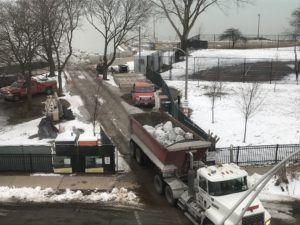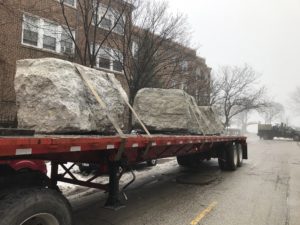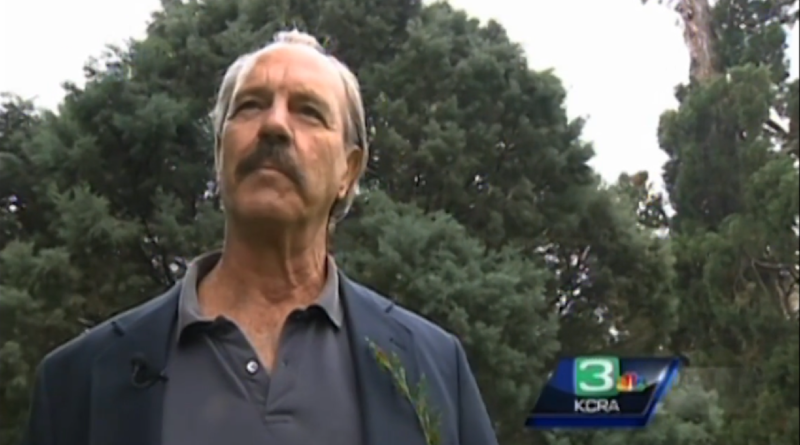Botanical Sexism Is Making You Sick
Podcast: Play in new window | Download (Duration: 1:31:38 — 41.6MB)
Subscribe: Apple Podcasts | Spotify | Android | iHeartRadio | Podchaser | Email | TuneIn | RSS | More
(May 24, 2020) We’re being hit by a green wave right now, but it has nothing to do with a Green New Deal or economics of any kind. The USA National Phenology Network describes it as “the flush of green that accompanies leaf-out…over the course of the spring season.” But this is also the time that botanical sexism makes life miserable for millions of people. Do I have your attention yet?
Skip to a specific segment in this podcast.
6:56 Tom Ogren of Allergy-Free Gardening
53:00 Bob Bertog, Bertog Landscape Co. and Roger Tietz. Gillen Marine Construction
I’m talking about pollen–produced first by trees, then grasses and other plants through the growing season. For people with allergies, it takes a lot of joy out of springtime. And it appears that things are getting worse. A publication called Elemental is advising folks to Get Ready for the Worst Allergy Season We’ve Ever Had. How do they know?
Now there’s growing evidence that climate change is producing a veritable paradise for pollen, resulting in a dramatic increase in allergy rates and severity. A 2019 study in the journal The Lancet Planetary Health looked at airborne pollen levels over the past several decades for 17 locations around the world — including across Europe, Canada, Iceland, and the U.S. More than two-thirds of the locations showed a “significant” increase in pollen levels during that time, as well as longer pollen seasons, linked to rising average temperatures. “When spring comes earlier, trees bloom and start to produce pollen early. This results in people getting exposed to allergenic tree pollen for a longer period of time,” says Amir Sapkota, PhD, a professor of Environmental Health at the University of Maryland School of Public Health.
Furthermore, the article notes that as CO2 warms the planet, it acts as a “powerful fertilizer” for plants. These supercharged plants produce more pollen, which produces more misery. This is where horticulturist Tom Ogren and the concept of “botanical sexism” enter the picture.
It started with his wife Yvonne, who suffers from terrible allergies and asthma. That led him to do “sniffing tests” with students in his horticulture class. What he discovered is that while most flowers produced fairly benign results, that was not the case with bottlebrush plants (Callistemon spp.) Upon sniffing those, his students started violently sneezing. He was on to something. Here’s more from his website, Allergy-Free Gardening.
In the following years Tom went back to college and earned an MS degree, focusing all of his graduate work on plant/allergy connections, and on the different plant flowering systems. One thing that deeply interested him was that so many separate-sexed (dioecious) trees and shrubs often triggered severe allergies. Occasionally he’d come across advice from lung associations or allergy groups that suggested no one plant any of these trees or shrubs (these included plants such as yew, yew pines, willows, ash, mulberry, Pistache, pepper trees, junipers, maples, box elders, poplars, aspens, etc.).
Eventually it occurred to him that since so many of these “very worst” plants were dioecious, separate-sexed, where one tree would be all male, and another all female, that in truth only the males produced pollen. He also concluded that since female plants never produced any pollen, that they were the ones that would be most truly allergy-free. He was the first to notice and then write and publish about how the sex of plants influenced pollen allergies.
In a recent-ish article in Living Allergic, Ogren offers some advice.
If you see any kind of berry or fruit on a shrub, tree or other plant, you know, if nothing else, that it’s not an all-male plant. On the other hand, if it has any words like “seedless” or “fruitless” or “litter-free” in its name, then that’s a warning to leave it alone.
Another clue is that there are plenty of flower species for which growers have been breeding to get more petals – called doubles and super-doubles. What often happens is that every time you get an extra petal, you lose a male stamen, and eventually the whole flower becomes “stamenoid” – meaning that the stamens look a little bit like stamens, but they’re not functional. Generally, the more petals a flower has, the less viable pollen it has. This is true with hundreds of different flowers. Many plants that have highly doubled-up flowers – for example a rose-of-sharon that doubles – won’t produce any allergenic pollen at all.
Here’s the problem with that last part. Author Kim Eierman, author of The Pollinator Victory Garden: Win the War on Pollinator Decline with Ecological Gardening, was on our show recently. And she reports that double flowers are almost worthless to our ever-declining pollinators. That’s something we’ll address on today’s show.
We’ll also ask Tom about his adventures in Canada, where he did “a coast-to-coast allergy audit of the 11 largest cities in Canada, sponsored by Johnson & Johnson. In each, he studied the urban landscapes and visited local nurseries to see exactly which plants were being sold and how allergy-friendly they were (and weren’t).” He talked to Mel Magazine about that trip and about why the horticultural industry seems to have gone down the wrong road.
It wasn’t always this way. Before 1950, most of the trees in the U.S. urban forest were grown from seedlings and evenly split among genders. That all began to change in 1949, Ogren says, when the USDA Yearbook of Agriculture offered the following advice: “When used for street plantings, only male trees should be selected to avoid the nuisance from the seed.”
He claims the epidemic of allergies started shortly thereafter. The numbers more or less back him up. That is, while in 1952 only two percent of the U.S. population had allergies, 30 percent of adults and 40 percent of children now have some form of allergic reaction to pollen. “We’ve got a serious problem, and it’s getting worse,” Ogren says.
By the way, Tom has written three books on the subject: Safe Sex in the Garden, Allergy-Free Gardening, and his latest, The Allergy-Fighting Garden. He has also created something called the Ogren Plant Allergy Scale (OPALS), that measures the allergy potential of all garden and landscape plants. He now has ratings (between 1 and 10) for more than 5,000 plants.
The last time Tom and I talked on the radio was in 2012. We have a lot of catching up to do.
Fighting erosion on the Great Lakes
Chicago lost two beaches this past winter. To be sure, they were tiny spots on mighty Lake Michigan. But high water levels and relentless storms finally forced the City of Chicago to give up on saving Rogers Beach and Howard Beach, both in Rogers Park.


One of our listeners sent us the photos of the work at Rogers Beach that you see here.
But things aren’t looking a lot better as we head towards summer.
Since September 2014, the planet’s largest collection of freshwater has broken and re-broken most of its long-term records. Last June and July, Lakes Superior, Erie, Ontario, and “the sixth Great Lake,” St. Clair, all surged above century-old highs. Meanwhile, Lakes Michigan and Huron hit new peaks this April, after an unusually wet winter pushed their levels three feet above the monthly average.
That story was published while we were in the midst of record rains in Illinois. For the third year in a row, Chicago has set a record for rainfall in May. And this month isn’t over yet! Those rains are wreaking havoc with homeowners along rivers, farmers and others.
That brings us to people like Bob Bertog and Roger Tietz. Bob is president of Bertog Landscape Co. in Wheeling, Illinois. While his family business has worked on beach erosion projects, even homeowners away from lakes and rivers can benefit from plants hardy enough to handle floodwaters.
Roger is superintendent at Gillen Marine Construction in Mequon, Wisconsin. Beach erosion jobs are part of his resume, too. Horticulture and construction businesses work together all the time. Bertog and Gillen have combined forces to preserve lakefront homes. It appears that with the rains and high lake levels, this year is going to be a busy one. They join us on today’s show.


